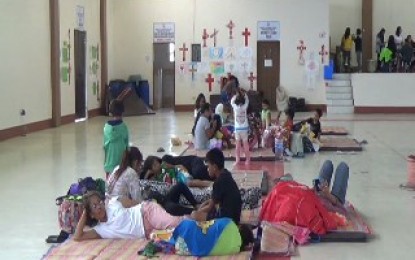
File photo
MANILA – Joint Task Force Covid Shield chief Lt. Guillermo Eleazar on Sunday ordered all commanders of the Philippine National Police (PNP) to coordinate with their local government unit’s (LGU) disaster risk reduction management office (DRRMO) counterparts to ensure the safety of residents inside evacuation centers both from the impact of Super Typhoon "Rolly" and from the possible coronavirus disease 2019 (Covid-19) infections.
Eleazar made this call as the weather bureau placed Catanduanues, Albay, and Camarines Sur under Tropical Cyclone Wind Signal (TCWS) No. 5 while Metro Manila and big part of Southern Luzon are under TCWS no. 4.
He said local police forces should not only assist in the mandatory evacuation being implemented by the LGUs but also be involved in coming up with measures to protect the evacuees, especially children, senior citizens and persons with existing health conditions which are considered as prone to virus infection.
“Local commanders should ensure the presence of police personnel to ensure the protection of our kababayan in the evacuation centers. We leave the decision to our PNP units on the ground based on their coordination with their LGUs on how to properly and effectively implement these measures,” Eleazar said in a statement.
In Bicol region, at least 1 million residents were reportedly evacuated as early as Saturday.
Local government authorities have also conducted mandatory evacuation in Calabarzon, Metro Manila and Central Luzon.
The National Disaster Risk Reduction and Management Council (NDRRMC) said at least 31 million individuals could be possibly affected by "Rolly".
"Our predictive analytics reflect between 19 million (and) 31 million individuals will possibly be affected by the storm based on the population count in the areas within the typhoon track," NDRRMC spokesperson Mark Cashean Timbal said.
However, Timbal said the number of people living in danger zones and those who are not have yet to be properly classified.
"This means that figures of evacuation would be very different from this (because) evacuations (will) be coming mostly from danger zones," Timbal said. (with reports from Priam Nepomuceno/PNA)
